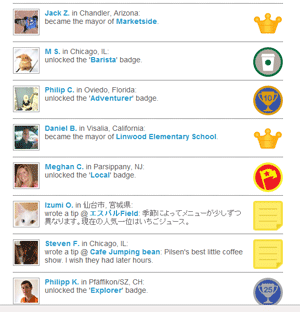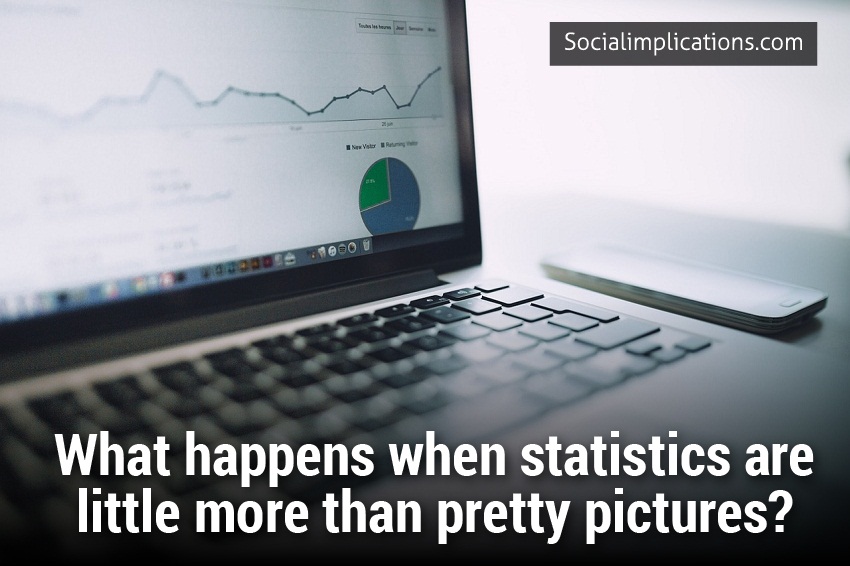Spam. Eww. Who wants it, right? Unfortunately spam isn’t confined to email inboxes. It’s rampant in the world of social media. These days spam comes in all shapes and sizes, from entire blogs that are spam to itty bitty tweet spam. If you’re serious about using social media marketing to promote your business, you can’t afford to be labeled a social media spammer.
That “spammer” label can be a hard thing to shake. The thing is, you might earn the title completely unintentionally. What you consider innocent might be viewed very differently by the people you’re trying to reach through your social media marketing efforts.
Types of Social Media Spam
The first step to avoid becoming a social media spammer is to understand the different types of social media spam. Here are five of the most common:
- Profile spam — Profile spam is usually a type of link spam. It’s when you set up many social media profiles on different services like social networks solely, or mostly, to add links to your site. You might think you’re adding value by helping people find your site. If you’re not actively engaging with community members though, you’re spamming the service and wasting visitors’ time.
 Comment spam — Comment spam is another common type of link spam. This is when you visit blogs, social networks, social bookmarking sites, Q&A sites, or any type of social media service that allows you to leave comments. You leave brief comments that don’t really add to the conversation, and you do it in order to leave a link. Saying “great post” is fine if you want to shoot someone a quick email with a pat on the back. But when you litter a comment thread with comments like that, with no additional value added, you’re going to piss off other readers. It’s more they have to scroll through just because you wanted to toss up an ad to your site through a link, and it’s behavior that deserves a slap on the wrist. Bad blogger. Bad!
Comment spam — Comment spam is another common type of link spam. This is when you visit blogs, social networks, social bookmarking sites, Q&A sites, or any type of social media service that allows you to leave comments. You leave brief comments that don’t really add to the conversation, and you do it in order to leave a link. Saying “great post” is fine if you want to shoot someone a quick email with a pat on the back. But when you litter a comment thread with comments like that, with no additional value added, you’re going to piss off other readers. It’s more they have to scroll through just because you wanted to toss up an ad to your site through a link, and it’s behavior that deserves a slap on the wrist. Bad blogger. Bad!- Follow spam — Follow spam is usually related to Twitter (and other microblogging services), but it could apply to social networks too. In fact, I’d say MySpace really kicked off follow spam through “friending.” Let’s look at it in terms of Twitter though. Follow spam is when you follow a massive number of people for the primary purpose of getting them to follow you back (as opposed to actually caring about what they have to say). It’s a matter of trying to artificially inflate your appearance of popularity. Rather than make you seem popular though it just makes you look skeezy, like that creepy guy who hits on every woman he meets just hoping that one will give him the time of day. You really don’t want to be that guy. Follow spam is twice as bad if you do get those follow-backs and then you proceed to spam them with links to your site (or affiliate links).
 Geolocation spam — Geolocation spam is often a result of an individual’s behavior rather than a company’s. There is nothing wrong with geolocation tools like Foursquare in general. The problem is when users of these tools (which tell friends and others where they are) are attached to larger social media tools such as Twitter. Most of your Twitter followers probably don’t care what restaurant you’re eating at. They might be halfway around the world. Leave the geolocation updates to their own sites or services rather than forcing them on a more general follower-base. The updates amount to free ads and endorsements of the places you visit, which can be almost as bad as tweeting your affiliate links left and right. It can be downright annoying, and since it’s highly unlikely that it’s the reason people started following you on Twitter, those “free ads” are partially unsolicited. Don’t make them choose between putting up with geolocation spam or blowing you off completely. While you might get away with it now, the more people that start doing it the more obnoxious it’s going to get and the less tolerance people are going to have for it (just like good old Myspace again where the cute little “bulletins” everyone liked to use became self-promotional, attention-whoring spam breeding grounds). Learn from past social media marketing mistakes; don’t add to the problem.
Geolocation spam — Geolocation spam is often a result of an individual’s behavior rather than a company’s. There is nothing wrong with geolocation tools like Foursquare in general. The problem is when users of these tools (which tell friends and others where they are) are attached to larger social media tools such as Twitter. Most of your Twitter followers probably don’t care what restaurant you’re eating at. They might be halfway around the world. Leave the geolocation updates to their own sites or services rather than forcing them on a more general follower-base. The updates amount to free ads and endorsements of the places you visit, which can be almost as bad as tweeting your affiliate links left and right. It can be downright annoying, and since it’s highly unlikely that it’s the reason people started following you on Twitter, those “free ads” are partially unsolicited. Don’t make them choose between putting up with geolocation spam or blowing you off completely. While you might get away with it now, the more people that start doing it the more obnoxious it’s going to get and the less tolerance people are going to have for it (just like good old Myspace again where the cute little “bulletins” everyone liked to use became self-promotional, attention-whoring spam breeding grounds). Learn from past social media marketing mistakes; don’t add to the problem.- Splogs – Splogs are like the super-sized version of social media spam. It’s not a link or a tweet or a message or a comment. It’s a whole site! A splog is a spam blog. They generally involve little to no original content. They just aggregate RSS feeds from other blogs so they stay regularly updated. Then they have large numbers of ads (often from contextual ad networks) to earn money. There are several problems with splogs. First, they rarely get permission to republish and monetize the content they use (meaning they’re often violating the copyright of the author). These spam blogs can also hurt the original author’s blog in some cases. For example, if a splog is indexed very frequently by search engines then its copy of an article might get indexed faster than the original author’s copy does (such as if the author’s site is new and not quick to update). While it doesn’t seem to happen often, this can result in the original content being outranked by the splog, so traffic goes to the spammer instead of the legitimate author of a post. Running a splog might make you some quick ad revenue or give you sitewide links to other sites, but they’re not an ethical option. Depending on how you got the content, they might not even be legal.
These are some of the most common types of social media spam I come across, and types of spam you might not even realize you’ve been guilty of. Even if you have innocent intentions, acting in a way that annoys your audience or abuses relationships with them can cause lasting damage to your company’s reputation. Is it really worth it for a few links or easy ad revenue? I guess that depends how long you plan to be in business.
Featured Photo Credit: BigStockPhoto.com














Many splogs actually scrape content from RSS feeds. Sometimes they scrape only the summary or a portion of the content. If you make it a point to include links to your site early on in the content you can use their jackass moves to build links to your own site. After all, if they’re going to steal your content and there’s nothing you can do to stop them, shouldn’t you at least get a link out of the deal?
Doing so is easy using a plugin like “RSS Footer” (http://wordpress.org/extend/plugins/rss-footer/) which allows you to create a custom message that appears either at the beginning or end of each post in your feed. Indiscriminate scrapers will include the message generated by the plugin, which can and should include links to your site using your carefully chosen anchor text.
Another hilarious way to combat scrapers is by using images. Let’s say a scraper steals your post, images and all. Just change the first image to something that broadcasts that the content is stolen. The URL of your original image is http://www.domain.com/images/example.jpg and it will be scraped along with the content. Once you’ve published the post and it’s been scraped, just upload a new image that will be served up by that URL and used on the scraper sites.
An image that would, perhaps, say “WE’RE PLAGIARISTS! THIS CONTENT HAS BEEN STOLEN. Visit http://www.domain.com for the original content.” You then change the image URL on your post to serve up your original image and that damn scraper site will likely never be the wiser. They’ll be telling anyone and everyone who visits their site that the content there was stolen from your site. And you can’t put a price on outing that kind of douchebaggary. 🙂 Take that scrapers! 🙂
You’re right. Many splogs only take a portion. Those ones are definitely harder to fight, because a small blurb followed by a link (which many include on their own, even if you don’t force it with a plugin) might not fall under the heading of a copyright violation.
The image tip is an oldie but goodie. In the one instance where I wanted to use it, the thief had actually uploaded all of my images to their on server so it wasn’t an option. Unfortunately some of these spammers are getting smarter. Of course, being me, that meant getting tougher. I got his ad network account banned (for all sites he used the ads on) and I had the site forcefully shut down by the host. In that case they stole my entire site — my posts, my images, my design, and even put it up on a very similar domain to try to confuse visitors. What’s sad to me is when people allow things like that to happen without fighting back. It’s not in my nature. That might make me a bitch to some (been called much worse), but I’ll take that over being a coward or a door mat any day! 🙂
Spamming simply makes no sense, not only you will be ignored by community but you won’t achieve any results. Many social networks block account by the IP address and even if you would like to start it over you might not have another chance.
As for the splogs, I haven’t seen them recently though it was a usual practice 5 years ago or so. Splogs are kinda useful to get traffic figures but not the actual sales results.
Oh, they’re definitely still splogging. 🙂
I find dozens of them caught in just my main blog’s spam filter every single week. They do it because they want the trackback links on your blog to theirs so they can increase traffic and Pagerank so they can earn more from contextual ads (through the increased traffic) and more from private ad sales (due to a higher Pagerank, because some people still consider it a worthwhile metric while it’s really not).
So they might be hitting you. You might just not see them as much because Akismet (if you use that) has gotten pretty good at filtering them. 🙂
For me I’ve had more trouble with flooding on twitter than anything else. Where people are posting a link to every single article they read. It’s not necessarily spam where they are trying to sell something they have or own.
People really need to learn moderation. If I read something really good, I’ll post it up. But posting 4 or 5 articles every couple of hours causes a quick un-follow.
twitter gives me the last 20 updates or so in my news feed. 10 of them should not be from the same person.
How many tweets a day are normal?
I definitely agree Jennifer, one of the ones I hate the most Twitter users that continuall spam non useful content. There is nothing wrong with tweeting a lot, as long as you are providing VALUABLE content, everyone’s following count is different so it all depends.
But, for those that are just sending many @ replies with 5 – 10 Twitter profiles and a URL included, I definitely don’t like that one and I block them everytime I get a chance. Another one I hate is the “splogs” that are just generated for that exact reason, basically to spam or mislead to some offer or false content that doesn’t add any value.
comment spam is my #3, I get these all the time at my blog, there’s nothing wrong with commenting and leaving your URL, but for those that do abuse this and do it on a regular basis to like every blog post you create, it’s annoying, and little do they know, it will actually kill your reputation before you even had a chance to let social media work for you.
Some people do it on purpose, some people just don’t get what and how to use social media, for the people that don’t, I suggest they learn everything about social media before they use it, because it could backfire more than it does good. Great post ;)a
James – I think a part of that problem is all the automated tools. I don’t believe in using personal accounts to push every link to everything you read of blog. It’s just too much. For example, what I did was setup a separate account for that. There are still personal updates, but subscribers know up front that if they follow that account they’ll be receiving feeds of not only the blog, but related blogs managed by my regular contributors. But I would never put personal followers through that. Even setting up an account with that purpose and letting them know up front makes me uncomfortable. But people are crazy enough to like it. So as long as I don’t have to feel spammed to follow you, to each his own I guess.
As for how many tweets per day are normal, I really can’t even begin to guess. I have days where I might not tweet at all. I recently went through a very heated exchange with a company and have since basically launched a campaign against something I consider an abusive tool targeting users in my industry. So in that kind of case I’m tweeting much more often (and the follower count is increasing along with that). I’d say it’s more about what you’re saying than how often you’re tweeting.
Terrance – I really don’t like the tweets w/ nothing but a link (which it sounds like you’re talking about there). If someone doesn’t make it clear what a link either points to or refers to, I consider it link spam. There’s too much potential for malicious linking otherwise.
Comment spam really gets under my skin too. It’s like “if you try it once and you see your spam doesn’t go through, just stop. But don’t keep making me waste my time to sort through your garbage time and time again.” I don’t have a lot of time to spare, so I find it incredibly offensive when people proceed to waste it for no good reason. My only consolation is that they’re wasting their time too. 🙂
so..Shame on me for developing a laconica / sharetronix twitter account simulator autoposter 😛 however people complain about spam in this way, if you do it right and dont look lik spam then it certainly gets results d/full stop
Jest — The ability to get results doesn’t make something ethical (or legal in some cases). People get results spamming email boxes even though it’s not legal to do so. People get results calling people they’re not technically allowed to call. People get results by flat out lying in advertising to get people to think what they want even though there are laws against false advertising.
The results are never enough on their own to justify the means.
And speaking of results, spammers actually risk making it harder for themselves on the long run. Rather than adopting ethical and acceptable standards based on their market or audience and making it work for them, they’re forced to constantly revamp their business model or marketing plan when they’re caught, have accounts banned, etc. That’s extra time that could go into building real relationships with members of their market, enabling them to potentially increase sales minus the hassles of a scattered approach.
Thanks, Jennifer for shedding a bit more light on Spam. I though never was in that category but now I see the advice to register on many social media sites as possible is wrong advice if I am not participating actively in their communities. Do you think it is better to cancel my registration if except adding my new articles to those sites I am doing nothing?
Comment spam can easily be stopped by using bad-behavior and akisment plugins if you are on wordpress, but if you use a script like pligg, which is a social script then stopping spam will be a very tough issue,
i don’t think profile spam is a big thing, if you don’t participate on the community the profile pages hardly gets indexed, besides most social sites do the house cleaning and delete profiles of inactive members… also, i have seen many sites don’t give a do-follow profile link till you reach certain posts…
The real spam on the social media is the auto-bots, and to be fair on those bots, they are quite successful too 🙁 They have all types of bots, the user registration bots, the comments bots, the submission bots etc. But all this will only put the reputation of the spammer into further loss, and social media is, as i believe to build a brand value not to spoil it or build short term links… because all these spam links are ultimately deleted and banned!
So are you telling me that if I want to get a popular site I’m actually going to have to spend my evenings writing proper content so people actually want to link to my site!
Are you sure I can’t just you an auto-splog? =)
(btw never heard the term splog before, really like it)
Ideally, should those types of spam not exist? Sure.
But, to be fair, I think a lot of people make way too big a deal out of certain types. For example (as someone above me said already) if someone registers a social profile and doesn’t participate in the community, no one is put out. No one is bothered, and I’d be shocked if even the site owner checked out every single new user page. It simply doesn’t effect anyone, so I have a hard time calling that unethical.
The twitter following is the same thing. Someone following YOU does nothing to put you out. If you don’t like what is in their twitter feed (affiliate links or not) then don’t follow them back. Don’t have twitter email you each time you get followed, and you’ll never even notice. The only thing they’ll do is inflate your follower count for you. Which, while the count in and of itself doesn’t help you, it may certainly help your twitter feed look more legitimate/attractive to someone on the fence about following you, sending you a DM, etc.
Comment spam is a pain, that I definitely agree with. But, if you’re still battling comment spam in 2010, you need to wake up to the magic of plugins. Defensio has me essentially comment spam free on my blogs, so even comment spam isn’t really an issue any longer for anyone will to spend 90 seconds installing a plugin.
Splogs… I get a ton of links from splogs. They’re never going to go away, and you’re never going to stop them. Debating if they’re ethical or not doesn’t matter, they’ve become a fact of life. It’s like complaining about your taxes.
As someone else stated earlier, use them for links. Embed links in your content, and pick up free links from the sites that are scraping you. If your site doesn’t suck, Google won’t have any problem sorting out who wrote what and when. If you’re getting outranked by splogs stealing your posts, then you have bigger issues to worry about (like poor site structure, lack of backlinks, etc) before you start worrying about what anyone else is doing.
Every hour you spend worrying about splogs, or who’s following you on twitter, or who else made an account on a social site then didn’t participate is another hour you’re not building your own web presence or business.
Ian (& Directory Sieve) — Actually, the time I spend “worrying about splogs…” is building my business. I get paid to address these things. 😉
I’d also say you’re wrong about link spam profiles not affecting anyone. It’s a common misconception. As someone who’s owned and helped manage various communities online over the years though, I can tell you that you are indeed affecting someone. You affect that site owner’s stats, and you can waste a huge amount of their time cleaning up the mess left behind. Spam doesn’t have to involve a lot of people. You can spam just one — just as a single spam email is still spam, spamming a single person’s site to cram in your links is equally so.
Actually, Twitter follow spam also affects people. It leads to false follower counts (a spam follower is not a real follower — a member of your audience). It artificially inflates not only a sense of self-importance for some, but also the perceived importance of what someone has to say.
Keep in mind, this post didn’t actually have anything to do with how the spam might affect you as a non-spammer. It was addressing those who do spam others. While you might feel your actions are harmless, they rarely are — especially when more people follow suit.
Dan — I know, right? It’s so unfair! 😉
@Jennifer Mattern, personally i never join a social community where i can not contribute, and especially never join for the link value alone. Though, whatever reasons you posted, not that your reasons can be ignored, but still profile spam can not be regarded as a big issue.
When some one makes a profile the following things a site and the site owner gets:
1) a visit – yes, it still is a natural visit, but if used a bot to create the same then you know my already posted view on these auto bots. I will consider it as a spam and so will many others.
2) The profile details – that’s content! but if it is fake then it should fall under spam.
3) Number of users – Yes it is a valid user and the stat is rightly updated too with the user counter but it should fall under the non-contributing and in-active user unless the user takes out the time and contribute to the community.
If the social site has given a link field then filling the same field can not be considered as spam. The script should not allow links in the profile if the site admin thinks that non-contributing users mean spam!
1. All spam can lead to someone getting a visit. That’s no excuse to spam. It also artificially inflates their “real” traffic interested in the site, which is not a good thing for the business owner. Remember, if you’re spamming it’s probably a much larger issue — you’re not likely the only one doing it.
2. Useless content that doesn’t contribute real value isn’t appreciated by many website owners. It’s not up to a spammer to decide they should be grateful with it.
3. Regarding number of users — again we’re talking about the artificial stats inflation issue. And again, it’s not up to a spammer to decide that’s a good thing for the site owner.
The suggestion that having a link field means it’s not spam is ludicrous. That would be the equivalent of saying that someone having an email address means they’re soliciting uninvited emails and therefore email spam doesn’t really exist. Site owners are rewarding contributing members with a link because it adds real value when other members can get to know who they’re dealing with and what projects they’re behind. That’s not a solicitation of links without that larger relationship. If someone wants that, they already have options — free Web directories.
Hi,
Thanks for this, its really helpful. I must admit I wasn’t fully aware of the dangers of creating profiles and then not using them to actively engage. We use them frequently to publicise article marketing but there are some profiles that I’ve signed up to which have proved not to be useful or appropriate and we have then let go cold- do you think this is an issue or is it important to delete?
I agree though- I wouldn’t call it unethical- it’s lazy at most 🙂
Also I like your comment on geolocation spam “While you might get away with it now, the more people that start doing it the more obnoxious it’s going to get and the less tolerance people are going to have for it “- one could apply this to almost every SEO trick in the book! It’s getting so important to use intelligence and discretion when working for clients now as it’s so easy to fall foul of these rules.
Regards, Cordelia@GWS Media
Cordelial — I wouldn’t necessarily lump your example in with spam. I’m talking more about people who never intend to use the profiles / tools, but who set up profiles only because they’ll get a public profile page with a link back to their site. It sounds like you’re testing different tools, and there’s nothing wrong with that. I’d say it’s better to test and then leave something if it’s not working for you than to stick with something ineffective for too long when you could be moving on to better options.
Sorry I missed your reply! It must have gone through into my spam. Ok, that’s reassuring. We try and keep involved with all the profiles we post. Thanks!
Then I definitely wouldn’t lump your social media profiles in with the link spam variety. Worst case, they might be a time suck — trying to do too much or manage too many profiles on a regular basis can hurt productivity and thin out your time so much that you never become deeply involved with any particular community or site. Do you find that’s an issue, or are you managing alright so far? How many profiles would you say you manage right now out of curiosity?
[…] real eye-opener is this really expansive view of what some consider Social Media Spam. Social Networking is so new that there is still much to figure out and even more viewpoints to […]
[…] Why Spamming Social Media Won’t Get You Very Far […]